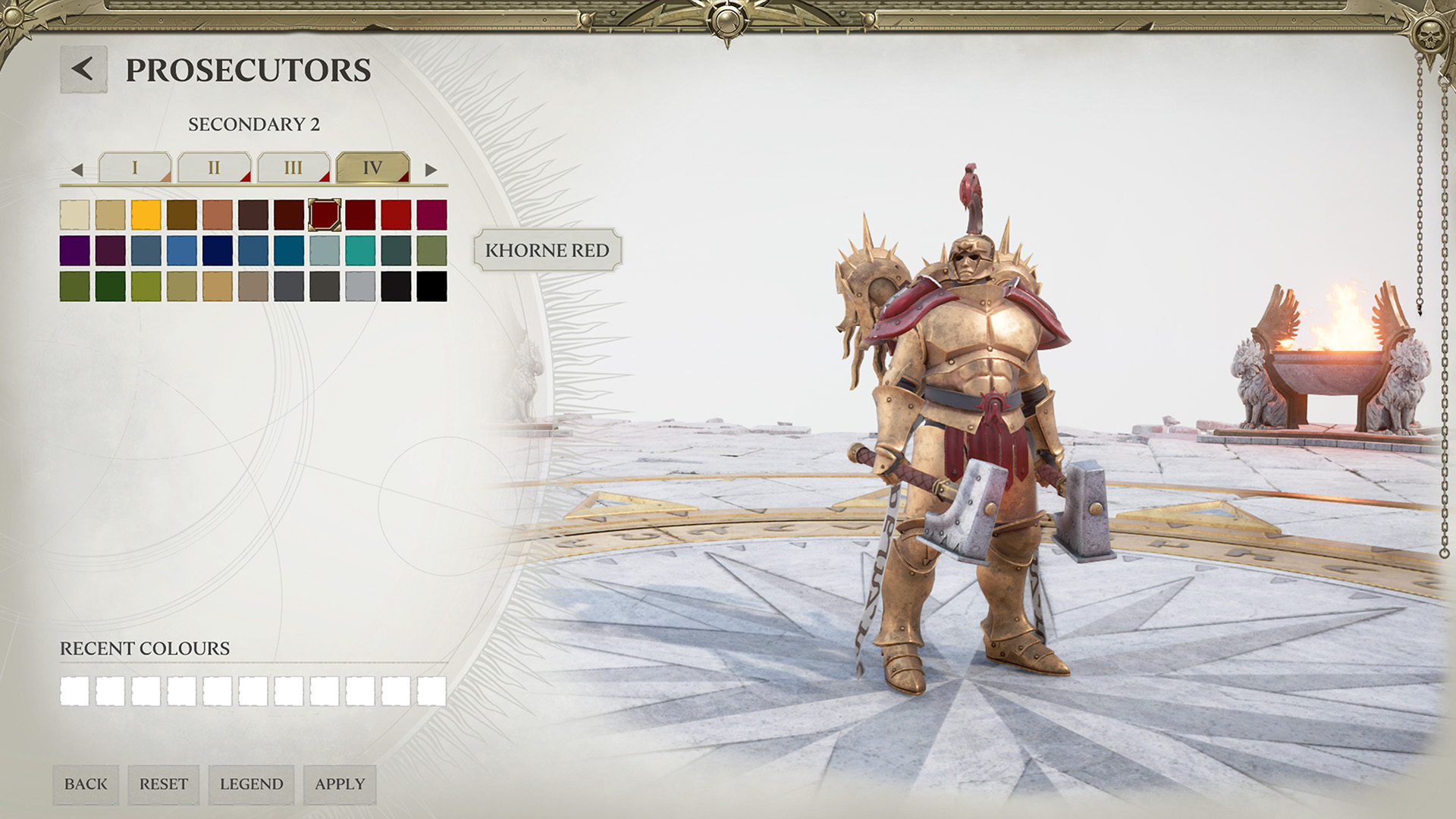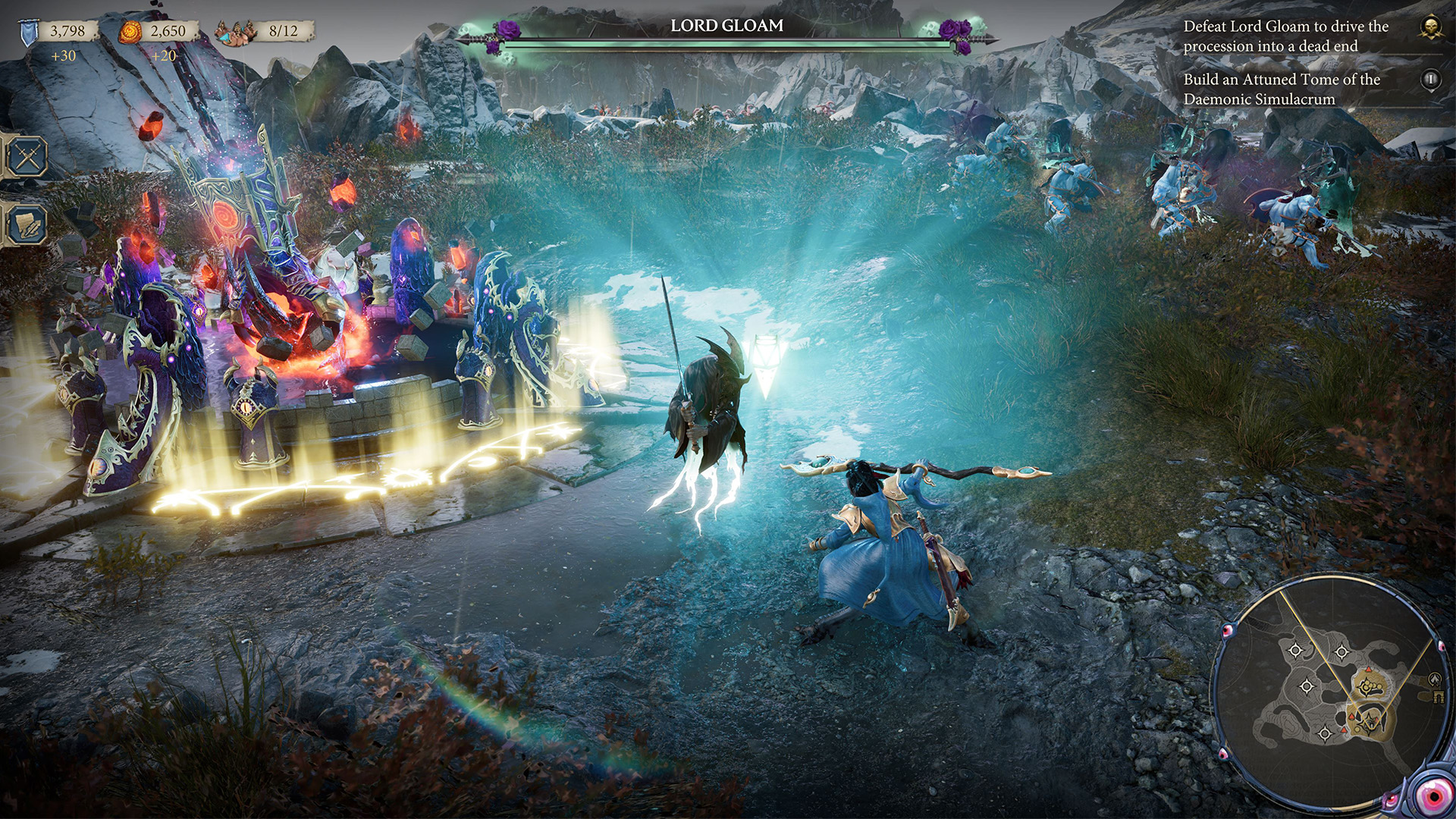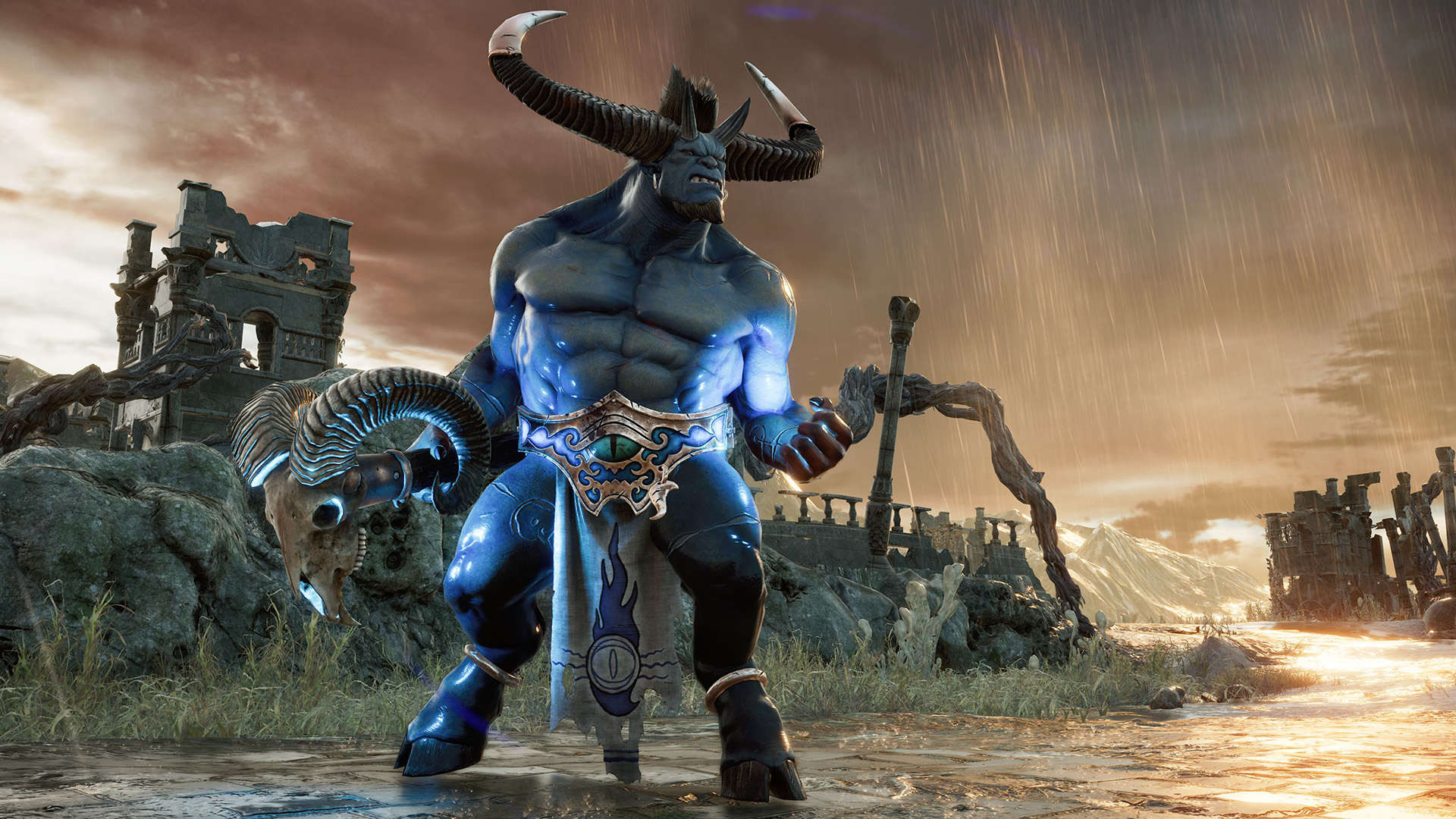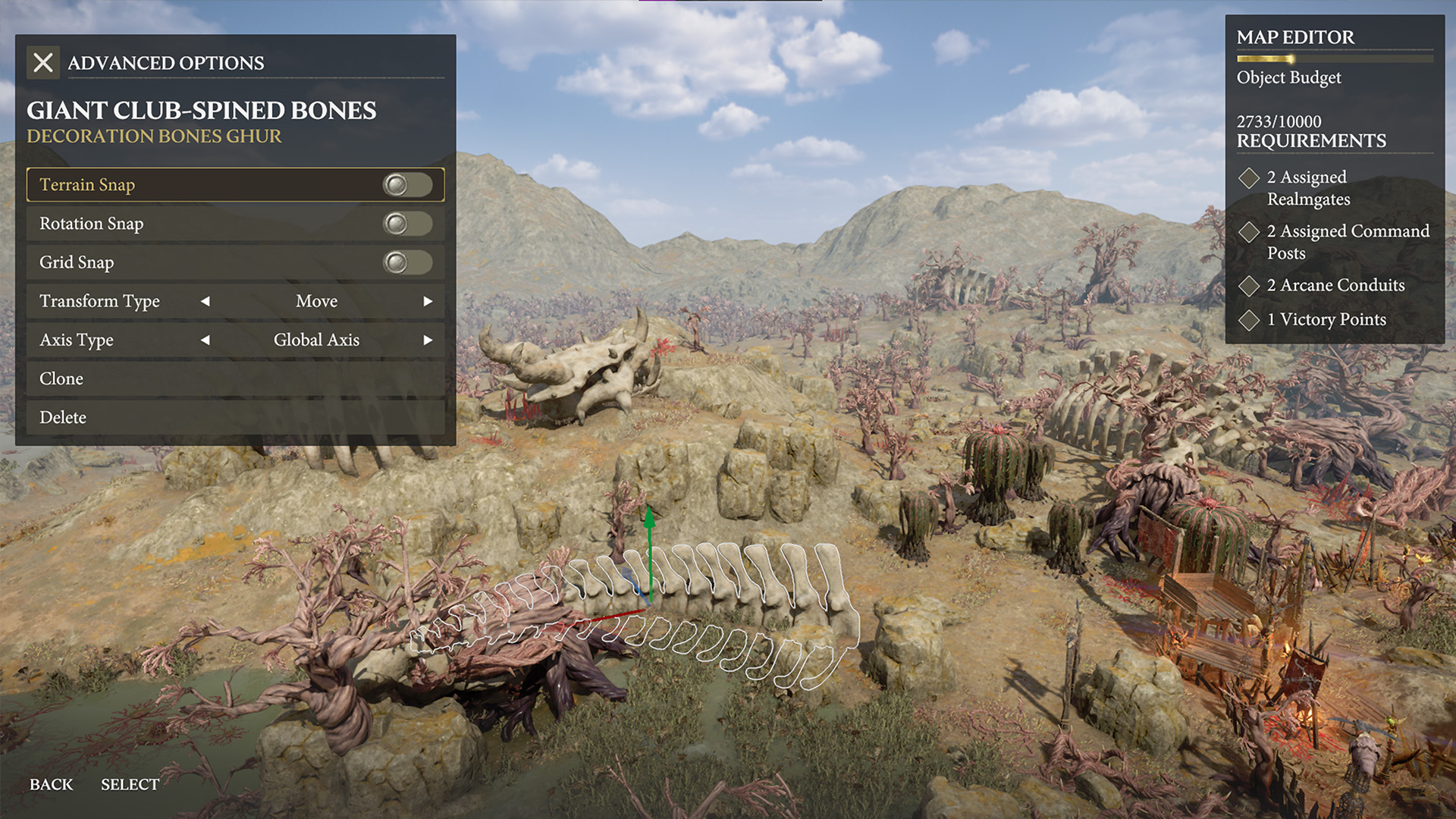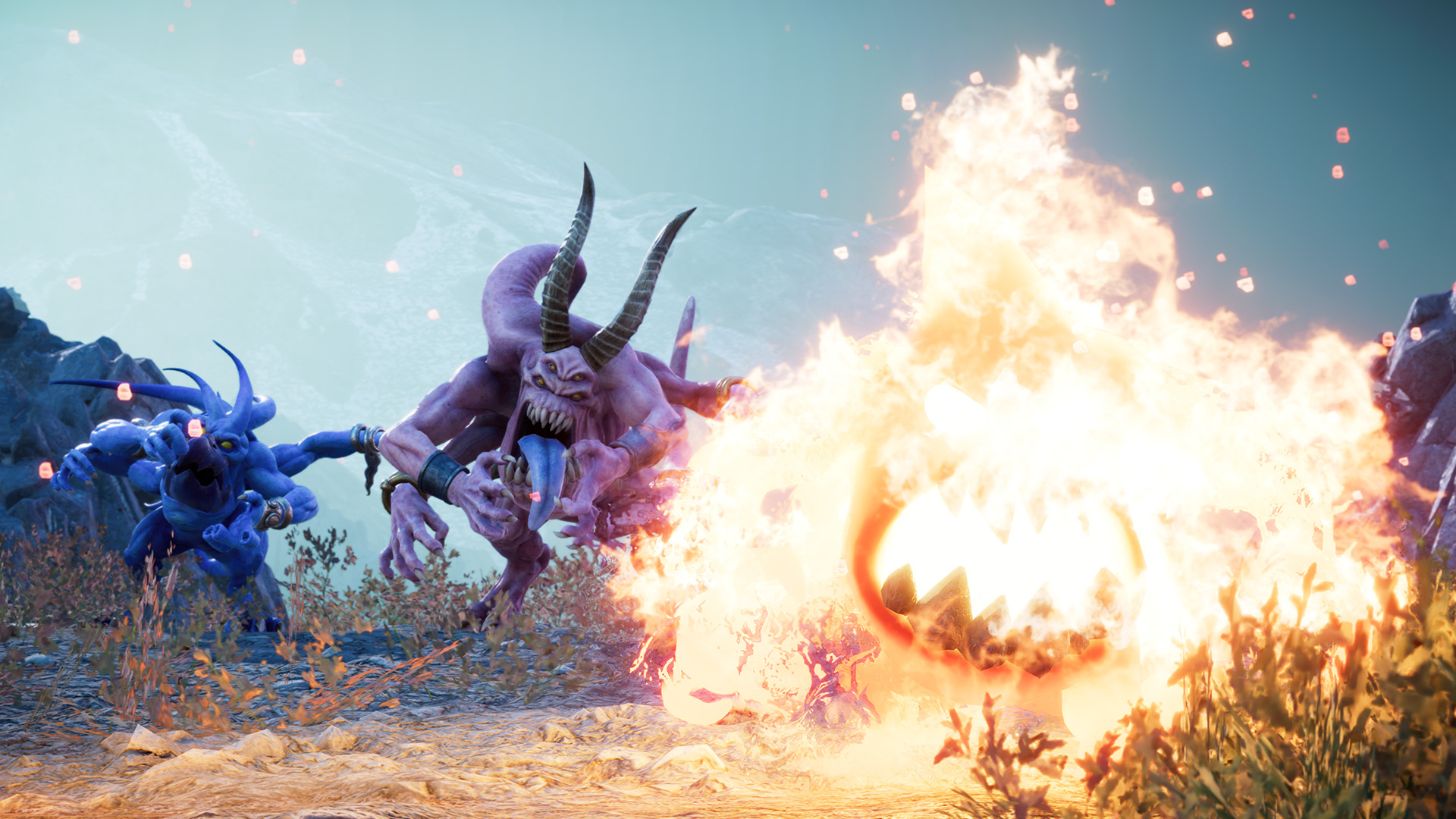The fine folks over at Frontier Developments invited us to play the upcoming Warhammer Age of Sigmar: Realms of Ruin in a remote hands-on event. This was handled via the remote-play app Parsec, and involved not only their new Conquest system, but a whole new faction: The Disciples of Tzeentch.
If you have not been keeping up with our coverage of this game, I’ll give you the short version: Age of Sigmar: Realms of Ruin is a real time strategy (RTS) game being developed by Frontier Developments for PC, PS5, and XBox. Our time with the game has shown it to be faithful to the tabletop game’s look and feel, while echoing many of the successes of Warhammer 40,000: Dawn of War II. With those basics out of the way, let us move on to all the new features we got our hands on in this latest preview, and the game’s fourth and final faction: The Disciples of Tzeentch.
Army Livery
In news that will be exciting to warhams of all varietals, there is a fully-featured army painter accessible from the main menu. In addition to a bevvy of premade schemes ripped straight from your battletome, you can create a custom scheme using a variety of Citadel colors. You can see how they’ll map on to every unit in the army from the interface, and there’s loads of space to make these units Your Dudes. Each scheme can even be broken down to a unit-by-unit basis, allowing for even more customization. I did not see any opportunity to upload your own army badges, but I saw enough Space Marines with low-res waifus or Goatse.cx plastered on their Pauldrons in the first Dawn of War‘s multiplayer, so no big loss there. As my time was limited I didn’t fully delve into this feature, but my messing around proved it to be easy to use with some highly visible results. I for one am looking forward to replicating my own Stormhost from the tabletop in the digital realm.
Conquest
One of the big new features teased as of late is Conquest, a sort of roguelite map-based score attack campaign with random modifiers tossed in. This is the long tail of single player content on offer, and offers more structure than simply playing 1v1 skirmishes with the CPU. It also sounds like a lot of ideas are being thrown at it, serving an unlikely combination of genre mechanics to mix with the tried and true RTS formula. On a world map, you travel from node to node, choosing your battles against other factions, and running into various modifiers that can change up the battle. These are called Twists, and range from mundane to game-changing. One might allow for more hero units to be summoned, while another may fundamentally change how you play, like playing with a strict time limit or limited visibility. At the end of the campaign, you face a final boss, and the idea is that that no two Conquest campaigns will ever be the same. I played three Conquest battles during this session, but all three were standard annihilation battles with no Twists. I wish I could have run into some of the teased modifiers so I could better report on this mode, but that’s the downside of randomly generated content. You can also share seeds for your Conquest campaigns, so if you wanted to try the same one again or share it with somebody else, you absolutely could.
Disciples of Tzeentch
As I had already played with the Stormcast and Kruleboyz in demos past, I beelined straight for Tzeentch. Had I more time I would also have tried out the Nighthaunt as well, but the Ghost Host didn’t appeal to me quite as much as musclewizards and daemons. The core of the army are your Magister, a fragile ranged support hero, Arcanites, a mixed light infantry unit, and Horrors, short ranged medium infantry. The Arcanites feel about on level with your standard Kruleboyz, but by hanging out near your Magister, they’ll get a shield to keep them in the fight. The Horrors are fascinating but finnicky – they split into smaller Blue Horrors on death, then again into Brimstone Horrors which run at enemy units and explode. Unfortunately, this prevents them from reinforcing, so I had a bunch of 1 or 2 man units of these guys hanging out who could never get brought back to full strength. I know this is at least partially intentional, but I think it could use some tweaking. The rest of the army focuses on fast moving melee and ranged units that can take to the skies to avoid the worst of the combat on the ground, with some big monsters near the endgame. This army’s keyword is “tricksy”, as they largely rely on mobility and ranged output to survive combat. Once they got stuck in with Nighthaunt or Kruleboyz melee units, they would either fold or put up an at-best modest effort to fight back. This fragility was offset by the multiple times I lured mobs of goblinoid jerks into ambushes where I could huck fireballs or magic blastwaves to erase them from the face of the earth. I was feeling the learning curve of this faction at first, but by the third game I felt I had a good handle on the army. The Disciples of Tzeentch are absolutely a finesse army, and in the hands of the right player I think they’ll be extremely hard to contend with.
Map and Scene Editor
I’m leaving these for last as I didn’t get to actually mess with them in this demo. From preview footage we were shown, there is a robust map editor that will let you craft your own battlefields. The interface looked intuitive and console-friendly, with a set budget for how many assets you can place. It doesn’t look to have quite the scope of, say, Warcraft III‘s map editor, but come to think of it, that’s the last time I played an RTS with one. It’s a rare feature, and like with Conquest mode, could prove to give this game a very long life. I hope these maps are easily shareable, as sharing them will be the most important feature this editor could have.
Second is the Scene Editor, which seems like the tool they may have used to make all those pretty screenshots you see in these and other articles. You can place units and select their animations down to the frame count to get the perfect shot, tilting the camera and applying Instagram-esque filters. It’s a very cute way to make your own little digital dioramas, and I’m betting someone out there will make some webcomics with it. I admit this feature isn’t really for me, but it’s a nice little value add for people who may want to use it. Crucially, it also gives you a place to inspect the beautifully detailed character models and animation of each unit in the game. I’m glad they’re able to showcase the hard work of their modelers, texture artists, and animators in this way.
Ultimately, I don’t think either of these features are for me, but they’re definitely for somebody. When I think of how many people paint models but never play, I think of the Scene Editor. When I think of modders or hardcore terrain builders, I think of the Map Editor. I’m not necessarily any of these people, but I hope they find their way to these tools.
Takeaways
Realms of Ruin is seeking to launch as a feature-rich game, and I’m here for it. At least some cosmetic DLC and the promise of new Heroes have been teased by the game’s Steam page, and one can only assume that more content is planned down the road. I hope this game finds an audience, as there is clearly no small amount of love and care put into it, and it’s a fun game to boot. If people latch onto it, I feel that the amount of material already on offer here for both single and multiplayer should keep people playing for quite some time. Warhammer Age of Sigmar: Realms of Ruin releases on November 17 for PC, PlayStation 5, and Xbox Series X|S.
Have any questions or feedback? Drop us a note in the comments below or email us at contact@goonhammer.com.

